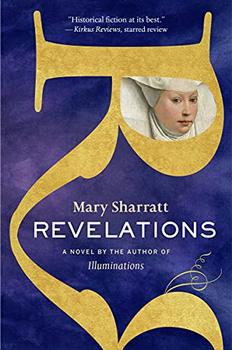Summary | Excerpt | Reading Guide | Reviews | Beyond the book | Read-Alikes | Genres & Themes | Author Bio

A Novel of Joan of Arc
by Kimberly CutterThe girl who led an army, the peasant who crowned a king, the maid who became a legend.
The girl who led an army, the peasant who crowned a king, the maid who became a legend
It is the fifteenth century, and the tumultuous Hundred Years' War rages on. France is under siege, English soldiers tear through the countryside destroying all who cross their path, and Charles VII, the uncrowned king, has neither the strength nor the will to rally his army. And in the quiet of her parents' garden in Domrémy, a peasant girl sees a spangle of light and hears a powerful voice speak her name. Jehanne.
The story of Jehanne d'Arc, the visionary and saint who believed she had been chosen by God, who led an army and saved her country, has captivated our imagination for centuries. But the story of Jehanne - the girl - whose sister was murdered by the English, who sought an escape from a violent father and a forced marriage, who taught herself to ride and fight, and who somehow found the courage and tenacity to persuade first one, then two, then thousands to follow her, is at once thrilling, unexpected, and heartbreaking. Rich with unspoken love and battlefield valor, The Maid is a novel about the power and uncertainty of faith, and the exhilarating and devastating consequences of fame.
Kimberly Cutter's debut novel is a gritty, absorbing exploration of the life of Joan of Arc. As Cutter explains in her afterword, Joan of Arc is one of the most written about women in history, yet I would bet that few capture the essence of Joan's journey like Cutter does. The novel follows Joan's life closely, and Cutter often uses phrases from Joan's actual conversations and correspondence for the dialogue of her character. Despite its accuracy and the adherence to the historical record, this delightful novel is very much fiction, taking the reader into the heart and mind of one of history's most fascinating women...continued
Full Review
 (778 words)
(778 words)
(Reviewed by Sarah Sacha Dollacker).
Joan of Arc's successes on the battlefield helped to end the series of battles known today as the Hundred Years' War (1337-1453). Essentially, the series of battles were dynastic conflicts between the Plantagenets in England and the Valois in France. In the 1330s, both Houses claimed rights to the vacant French throne, but these claims were preceded by a long, twisted relationship between England and France.
 It all started when William the Conqueror claimed the English throne in 1066. Because he came from France and was a vassal of the French king, William technically owed allegiance to the French king. For one king to owe allegiance to another was tricky, but as the English grew more powerful than the French over subsequent decades...
It all started when William the Conqueror claimed the English throne in 1066. Because he came from France and was a vassal of the French king, William technically owed allegiance to the French king. For one king to owe allegiance to another was tricky, but as the English grew more powerful than the French over subsequent decades...

If you liked The Maid, try these:

by Mary Sharratt
Published 2022
A fifteenth-century Eat, Pray, Love, Revelations illuminates the intersecting lives of two female mystics who changed history - Margery Kempe and Julian of Norwich.

by Helen Castor
Published 2016
From the author of the acclaimed She-Wolves, the complex, surprising, and engaging story of one of the most remarkable women of the medieval world - as never told before.
Fanaticism consists in redoubling your effort when you have forgotten your aim
Click Here to find out who said this, as well as discovering other famous literary quotes!